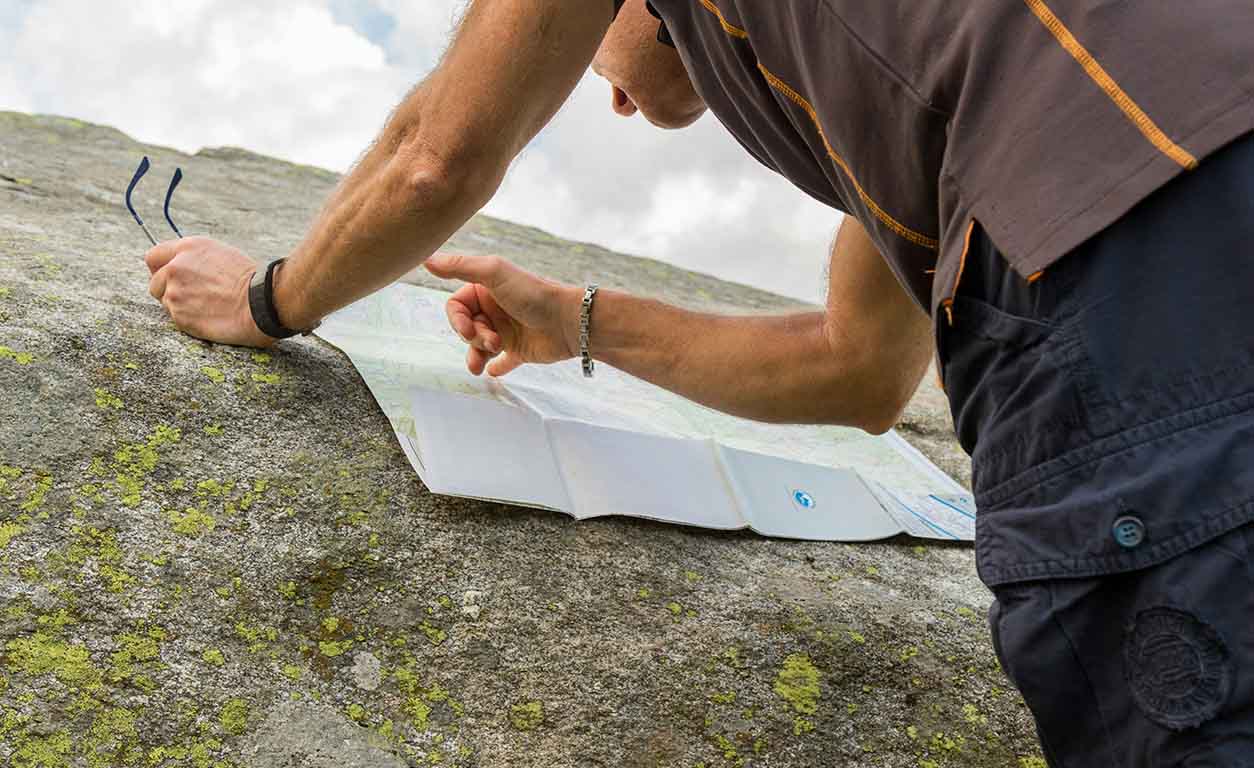Have you ever been lost? I have! It's a nerve-wracking feeling, especially in a foreign country where you can't communicate because you don't speak the language. That's why learning to ask for and give directions is a fundamental skill for surviving in a foreign country. If you have plans to visit Germany or even start a new life there, being able to ask for directions in German is a lifesaver.
In this article, we will cover essential words and phrases for asking and giving directions in German, providing practical language tools to make your journey smoother and more enjoyable. From basic vocabulary to useful tips and practice exercises, you'll find everything you need to navigate Germany like a pro.
- 7 Best German Horror Movies You Should Watch This Fall
- How Long Does It Take To Learn German? [2025 Guide]
- 50+ Funny German Phrases And Their Meanings

What Makes Learning German Directions So Important?
Knowing how to ask for and give directions in German can significantly enhance your travel experiences. When you're exploring historic cities or charming villages, having the language skills to navigate on your own allows you to discover hidden spots and make the most of your trip. You won't need to rely solely on maps or GPS, which means you can take scenic routes and make spontaneous stops along the way. This ability transforms potential stress into an adventure.
Also, being able to ask for directions in German boosts your confidence. Navigating a new city can be intimidating, but knowing the right words and phrases gives you the independence to explore without hesitation. Whether walking, using public transport, or driving, learning to ask for and follow directions in German makes you feel more secure and in control.
Another benefit we shouldn't overlook is speaking the local language—even just enough to ask for directions—greatly benefits your communication with locals. It demonstrates respect for their culture and often results in more positive interactions. Locals are more likely to be friendly and helpful when you make an effort to speak their language.
Now, let's take a look at the basic vocabulary you'll need to know to master German directions.

Basic Vocabulary
Building a solid foundation with relevant vocabulary is necessary before tackling the complexities of asking for and giving directions. Understanding key nouns and verbs related to navigation will help you interpret directions more accurately.
So, in this section, we'll cover the fundamental terms you're likely to encounter while asking for or giving directions in German.
Nouns Related To Directions
- die Straße (street)
- die Kreuzung (intersection)
- die Ecke (corner)
- der Platz (square)
- die Brücke (bridge)
Direction-Related Verbs
- Gehen (to go/walk)
- Fahren (to drive)
- Biegen (to turn)
- Überqueren (to cross)
- Folgen (to follow)
Key Prepositions For Directions
Prepositions are important for giving directions because they explain how objects and places are related to each other. Knowing how to use these prepositions can make finding your way and communicating in German much easier. Here's a table with some examples of how prepositions are used in directions:
Common Phrases For Asking Directions
Exploring a German-speaking area can be easier if you know the right phrases to ask for directions. In this section, we'll go over some useful phrases so you can confidently get the information you need to reach your destination.
- Wo ist...? (Where is...?)
- Wie komme ich zu...? (How do I get to...?)
- Können Sie mir helfen? (Can you help me?)
- Gibt es einen... in der Nähe? (Is there a... nearby?)
- Wie weit ist es bis...? (How far is it to...?)
- Welche Richtung muss ich einschlagen? (Which direction should I take?)
- Ist es zu Fuß erreichbar? (Is it within walking distance?)
Phrases For Giving Directions
- Gehen Sie geradeaus. (Go straight ahead.)
- Biegen Sie links/rechts ab. (Turn left/right.)
- Nehmen Sie die erste/zweite Straße links/rechts. (Take the first/second street on the left/right.)
- Gehen Sie bis zur Ampel. (Go until you reach the traffic light.)
- An der Ecke sehen Sie... (At the corner you will see...)
- Gehen Sie am Bahnhof vorbei. (Go past the train station.)
- Der Bahnhof ist auf der rechten/linken Seite. (The train station is on the right/left side.)
- Es ist gegenüber von... (It is opposite...)
- Es befindet sich neben... (It is located next to...)

Useful Tips For Asking And Understanding Directions In German
Getting around a new place can be tricky, especially if you're not fluent in the local language. We've put together some simple tips to make asking for and understanding directions in German easier.
1. Be Cordial And Specific
-Always start with a polite greeting or apology, such as "Entschuldigen Sie" (Excuse me) or "Guten Tag" (Good day).
-Be specific about where you want to go. The more detail you provide, the easier it will be for others to give accurate directions.
2. Learn Key Phrases:
-Familiarize yourself with essential phrases for asking and understanding directions. Knowing how to ask for help and the basic vocabulary for directions will make communication smoother.
3. Use Visual Aids:
-If you have a map or a GPS app, show it to the person you're asking. This can help clarify your starting point and destination, making it easier for them to guide you.
4. Confirm Understanding:
-Repeat the directions back to ensure you've understood correctly. Phrases like “Also, ich soll geradeaus gehen und dann rechts abbiegen?” (So, I should go straight and then turn right?) can help verify the information.
5. Ask For Landmarks:
-When receiving directions, ask for landmarks or well-known places. This can make it easier to follow the instructions and confirm that you're on the right track.
6. Be Aware Of Local Variations:
-Be mindful that regional differences may affect how directions are given. For example, some areas may use different terms or landmarks.
7. Take Notes Or Use Your Phone:
-Write down the key points of the directions, or use your phone to take notes. This will help you remember the instructions and refer back to them if needed.
8. Be Patient And Friendly:
-If you don't understand the directions immediately, don't hesitate to ask for clarification. Being friendly and patient encourages others to help you more effectively.
9. Practice Active Listening:
-Pay close attention to the directions given. Focus on keywords and phrases, and avoid distractions to make sure you understand every detail.
10. Know Basic Numbers And Directions:
-Understanding numbers and basic directional terms like "links" (left), "rechts" (right), "geradeaus" (straight), and "hinten" (behind) will help you follow directions more accurately.
FAQs About Asking Directions In German
Now, we will answer some frequently asked questions related to asking for and giving directions in German that may be useful to you.
1. How Do I Ask For Directions To A Specific Place In German?
To ask for directions to a specific place, you can use the phrase:
- “Könnten Sie mir bitte den Weg zum [place] zeigen?” (Could you please show me the way to [place]?)
- Alternatively, you can say: "Wie komme ich zum [place]?" (How do I get to [place]?)
2. What Should I Do If I Don't Understand The Directions Given?
If you don't understand the directions, you can politely ask the person to repeat or explain further:
- “Könnten Sie das bitte wiederholen?” (Could you please repeat that?)
- “Könnten Sie das bitte langsamer erklären?” (Could you please explain that more slowly?)
3. How Can I Ask for Directions If I'm Not Sure Of The Exact Location?
If you're unsure of the exact location, you can use a more general question:
- "Ich suche [type of place]. Wo finde ich das?" (I'm looking for [type of place]. Where can I find it?)
- Or: “Kennen Sie [type of place] in der Nähe?” (Do you know where I can find [type of place] nearby?)
Wrapping Up
Knowing how to ask for and give directions in German is a valuable skill that can significantly impact your travel experiences and daily interactions in German-speaking areas. Being familiar with these key expressions helps you communicate effectively and reach your destinations without unnecessary stress.
To improve your German skills and make learning more engaging, Lingopie offers interactive language practice through German TV shows and movies. It helps you hear and use phrases in context, just like native speakers do.
Remember, practice is the key to fluency. Become familiar with these phrases and engage in conversations as much as possible. As you practice, your communication will become more natural and effective. If you keep learning and practicing, navigating German-speaking environments will become second nature.




![6 Best Ways To Say Hello In Tagalog [A Traveler's Guide]](/blog/content/images/2024/07/6-Best-Ways-To-Say-Hello-In-Tagalog--A-Traveler-s-Guide-.jpg)




